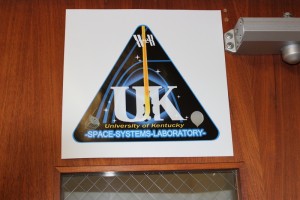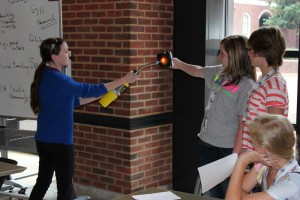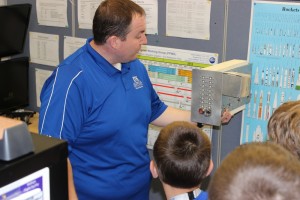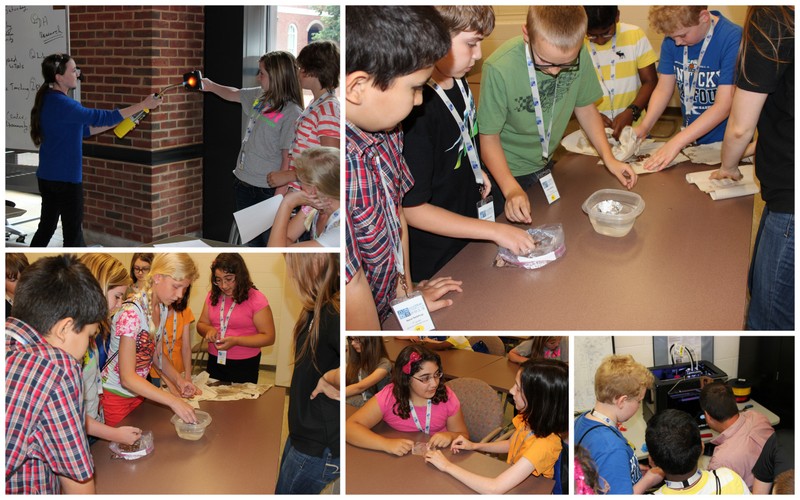Another steamy, hot, awesome day at See Blue STEM Camp! We’re thankful the weather has been cooperating this week, although this afternoon was not quite as fun to walk across campus in.
The red and blue groups were busy today with Dr. Thomas and making flying objects. They used the engineering design process and lots of mathematics (surface area) to create a flying object out of different types of materials and did some challenges around how far they could get it to fly. I’m sure they enjoyed showing you their creations tonight!
The green and yellow groups spent time with Dr. Cooper today in his lab with his graduate students and with the medical outreach center. They learned more deeply about the nervous system and how it works. Many of them brought home body tracings they did and some of the major nerve pathways drawn. They did some investigations around nerve impulses with crawfish and also talked about their own brains and nerves and what happens when you learn how to do something.
In their words…
- There’s a variety of molds for planes
- All airplanes are tilted a little bit, to fly.
- I learned about airodynamics, physics, + thrust
- That a plane need 4 diffrent forces to keep it in the air.
- Aerodynamics and Lift, drag, trust, and weight.
- The wings on the plane are bent down a little so the air molecules hit the underside of the wing violently to keep the plane up against gravity.
- The toy poodle can detect missing people the best
- That the brain controls more of your hand than any other body part
- Once our body gets used to doing somehting we can multitask and forget the first thing.
- I learned how craw fish are very sensitive on the tails.
- I learn about how we hear differently than animals.
Conversation Starters
Red/Blue Groups:
- What makes an airplane go into the air?
- What did you take into consideration when you created your airplane? How did that work for you? What are some other things you tried?
- What challenges did you complete in robotics today? What did you do to get your robot to go?
Yellow/Green Groups:
- How do the brain and nervous system work together?
- What is one of the most sensitive parts of the body? Why is it so sensitive?
- What happens to the crawfish’s tail when you touch it?
- What challenges did you complete in robotics today? What did you do to get your robot to go?

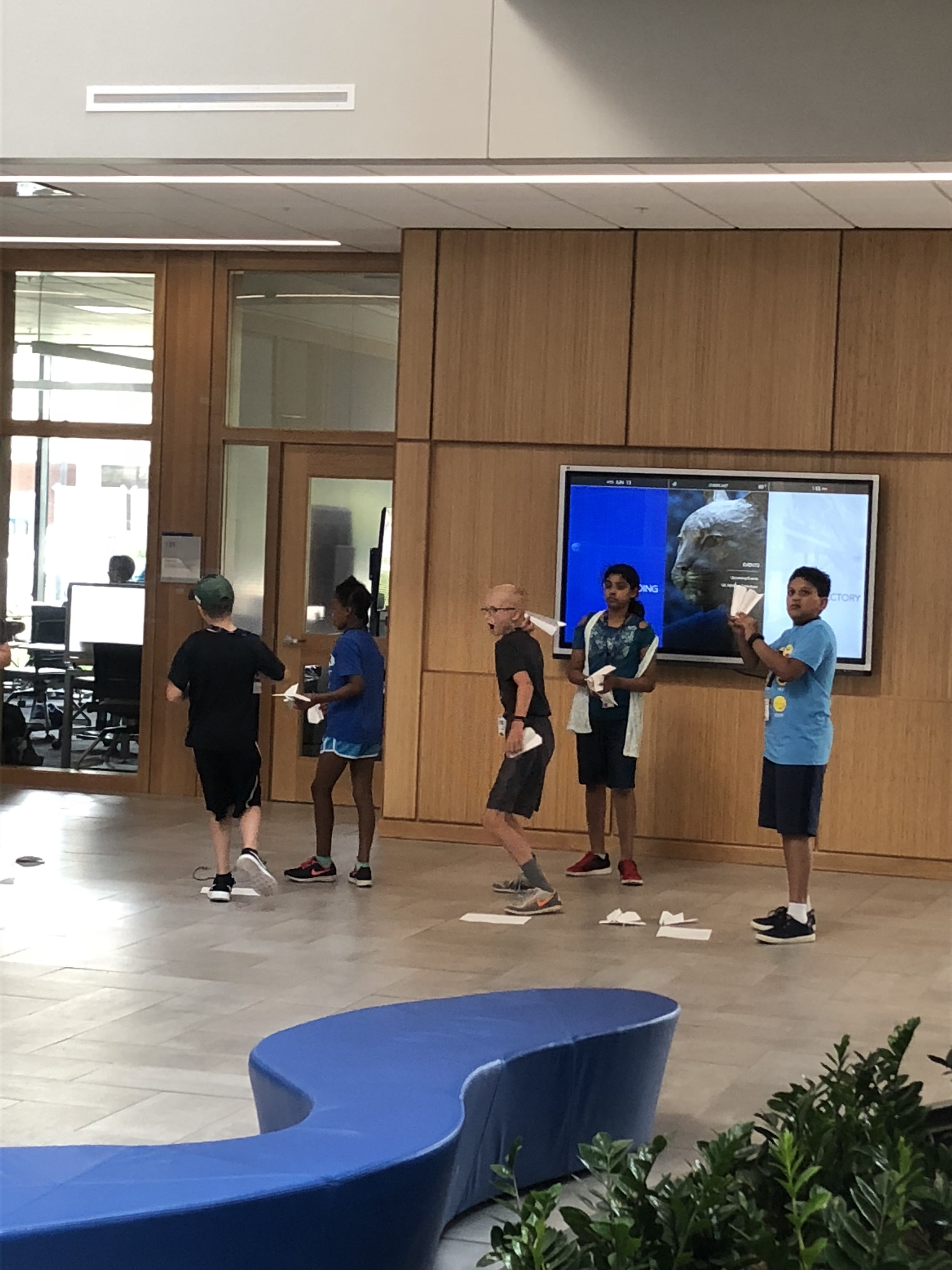
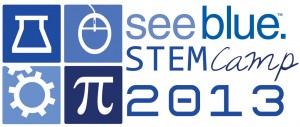 Welcome to the UK See Blue STEM Camp week 2…for the 7th and 8th graders! We have a great group of 72 students this year who were very eager to start up this morning even though we had dreary weather for a Monday!
Welcome to the UK See Blue STEM Camp week 2…for the 7th and 8th graders! We have a great group of 72 students this year who were very eager to start up this morning even though we had dreary weather for a Monday!